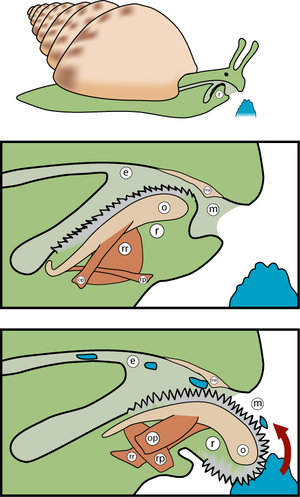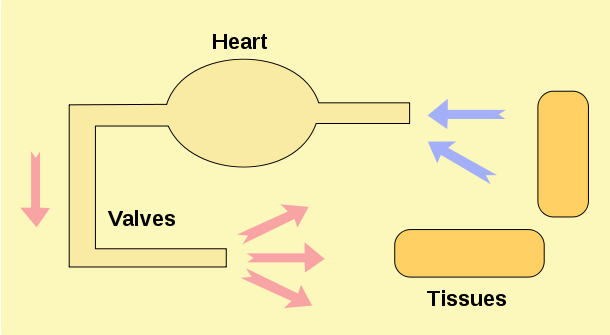Nutrition
The Neohelix albolabris is a herbivorous snail. Their diet includes lichens, tree sap, fungi, and a variety of other vegetation. In captivity the N. albolabris have also been found to eat: lettuce, carrots, cucumbers, mushrooms, spinach, oats and flakes of fish food (Strum et al 2006). They eat using their radula. A radula is comparable to a tongue and is used for tearing and scraping food off surfaces. On the radula you will find many sharp filaments made of chition that does the scraping. It is similar to how sandpaper makes small particles of wood into saw dust. That is how the radula make small pieces of food the snail can digest. In digestion the radula also aids in bringing the food particles into the mouth (Perez 2011). When a N. albolabris eats, it uses it's head and anterior foots contractions to help break up the body parts of food particles. It uses the posterior region of the foot for holding on to the food during these contractions (Ingram, 1941).

Even though the Neohelix albolabris is a peaceful creature, it is preyed upon by large animals including:
- Salamanders
- Beatles (don't eat the shell but reach inside of it)
- Other carnivorous land snails
- Small mammals such as mice and shrews
The N. albolabris is also a host to parasites. Upon dissection it was discovered that they carry trematode metacercariae (parasitic flatworms). There have been a few species of trematodes that use the Neohelix as an intermediate host, one in particular is Brachylaima thompsoni. (Barger and Hnida 2008). In terms of the snails that the trematodes normal infect, the N. albolabris is a larger snail and can harbor many different varieties of metacercariae. They have even been found to have the sporocyst with cercariae (which will develop into the parasitic flatworm) in side them waiting on the snail for better conditions.
Most of the Mollusc have an open circulatory system. It is rather interesting as it is comprised of a system of one heart, sinuses and blood vessels (Perez 2011). In most of the mollusc they have a respiratory pigment that is circulated through the hemolymph (blood) called hemocyanin. But since the N. albolabris is a terrestrial air breathing snail they contain the pigment hemoglobin.
